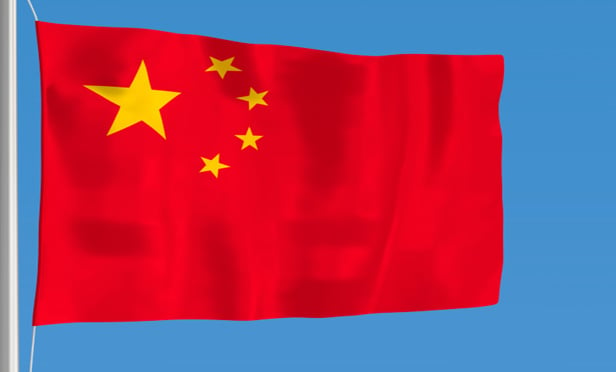Features

OFAC Asks Non-U.S. Persons to Advance U.S. Foreign Policy
In recent years, U.S. prosecutors and regulators have shown increasing interest in prosecuting people and entities with little or no connection to the United States. This trend has been especially pronounced in the context of the Foreign Corrupt Practices Act (FCPA) and has also extended beyond the FCPA to the prosecution of white-collar crime more generally.
Features

A Unique Solution to COVID-19-Related Delays At the U.S. International Trade Commission
In the wake of the COVID-19 pandemic, the ITC was forced to suspend in-person hearings and halt its fast-paced schedules while it explored existing technological resources and reliable and secure options available for video conferencing that would protect parties' confidential business information (CBI).
Features

A Balancing Act: Mitigating Data Privacy Risks in Cross-Border Discovery
The intersection of foreign laws governing data collection and cross-border discovery operations continues to be a potentially volatile conjunction.
Features

Global Increase of FCPA Bribery Cases Raises Specter of Piling On
The increasing number of regulators and enforcement agencies bringing foreign bribery cases across the globe raises the specter of successive or "carbon copy" cases. Policymakers and practitioners need to be aware of this developing risk and take steps to mitigate it.
Features

EU Unveils New Online Content and Data Regulation
Say Hello to the Digital Services Act.
Features

A Look at the EU's Latest Proposal for Regulating Online Content
The DSA is intended to reset the rules around online content moderation and to reframe the responsibility of platforms for illegal content uploaded to their websites.
Features

How U.S. Court Ruled Whether France's Right of Publicity Law Is Descendible
Battles over celebrities' estates often end up in litigation, but a recent court ruling involving the estate of French oceanic explorer, environmentalist and documentary filmmaker Jacques Cousteau included a not-often-seen right of publicity consideration: how a U.S. court determines whether right-of-publicity protection in another nation is descendible.
Features

The Increasing Use of Data Analytics in International Arbitration
Legal practitioners, as well as in-house counsel and other stakeholders, are making increased use of legal analytics in order to reach data-driven decisions in the context of future or ongoing litigation. Access to data analytics is even more relevant in the context of international arbitration, where the parties and counsel exert a greater degree of control over key features of the dispute resolution process.
Features

Recently Introduced Bill Would Limit ITC 'Domestic Industry by Subpoena'
Patent infringement disputes in the United States are not only heard in district courts. The U.S. International Trade Commission (ITC) also decides high-stakes intellectual property disputes — with the remedy for the IP rights holder not being damages, but rather an exclusion order that can block a competitor's importation of infringing articles into the U.S. That remedy can be incredibly powerful for companies engaged in stiff competition in the U.S. market.
Features

DOJ's China Initiative Poses Growing Risks for Those with Chinese Ties
In the two years since it's unveiling, the Initiative has expanded its scope from prosecutions of individuals suspected of stealing for China to those who simply have Chinese ties. The department is now increasing its mission to investigate individuals who are merely associated with Chinese recruitment programs.
Need Help?
- Prefer an IP authenticated environment? Request a transition or call 800-756-8993.
- Need other assistance? email Customer Service or call 1-877-256-2472.
MOST POPULAR STORIES
- Use of Deferred Prosecution Agreements In White Collar InvestigationsThis article discusses the practical and policy reasons for the use of DPAs and NPAs in white-collar criminal investigations, and considers the NDAA's new reporting provision and its relationship with other efforts to enhance transparency in DOJ decision-making.Read More ›
- Surveys in Patent Infringement Litigation: The Next FrontierMost experienced intellectual property attorneys understand the significant role surveys play in trademark infringement and other Lanham Act cases, but relatively few are likely to have considered the use of such research in patent infringement matters. That could soon change in light of the recent admission of a survey into evidence in <i>Applera Corporation, et al. v. MJ Research, Inc., et al.</i>, No. 3:98cv1201 (D. Conn. Aug. 26, 2005). The survey evidence, which showed that 96% of the defendant's customers used its products to perform a patented process, was admitted as evidence in support of a claim of inducement to infringe. The court admitted the survey into evidence over various objections by the defendant, who had argued that the inducement claim could not be proven without the survey.Read More ›
- The DOJ's New Parameters for Evaluating Corporate Compliance ProgramsThe parameters set forth in the DOJ's memorandum have implications not only for the government's evaluation of compliance programs in the context of criminal charging decisions, but also for how defense counsel structure their conference-room advocacy seeking declinations or lesser sanctions in both criminal and civil investigations.Read More ›
- The DOJ's Corporate Enforcement Policy: One Year LaterThe DOJ's Criminal Division issued three declinations since the issuance of the revised CEP a year ago. Review of these cases gives insight into DOJ's implementation of the new policy in practice.Read More ›
- Strategy vs. Tactics: Two Sides of a Difficult CoinWith each successive large-scale cyber attack, it is slowly becoming clear that ransomware attacks are targeting the critical infrastructure of the most powerful country on the planet. Understanding the strategy, and tactics of our opponents, as well as the strategy and the tactics we implement as a response are vital to victory.Read More ›
